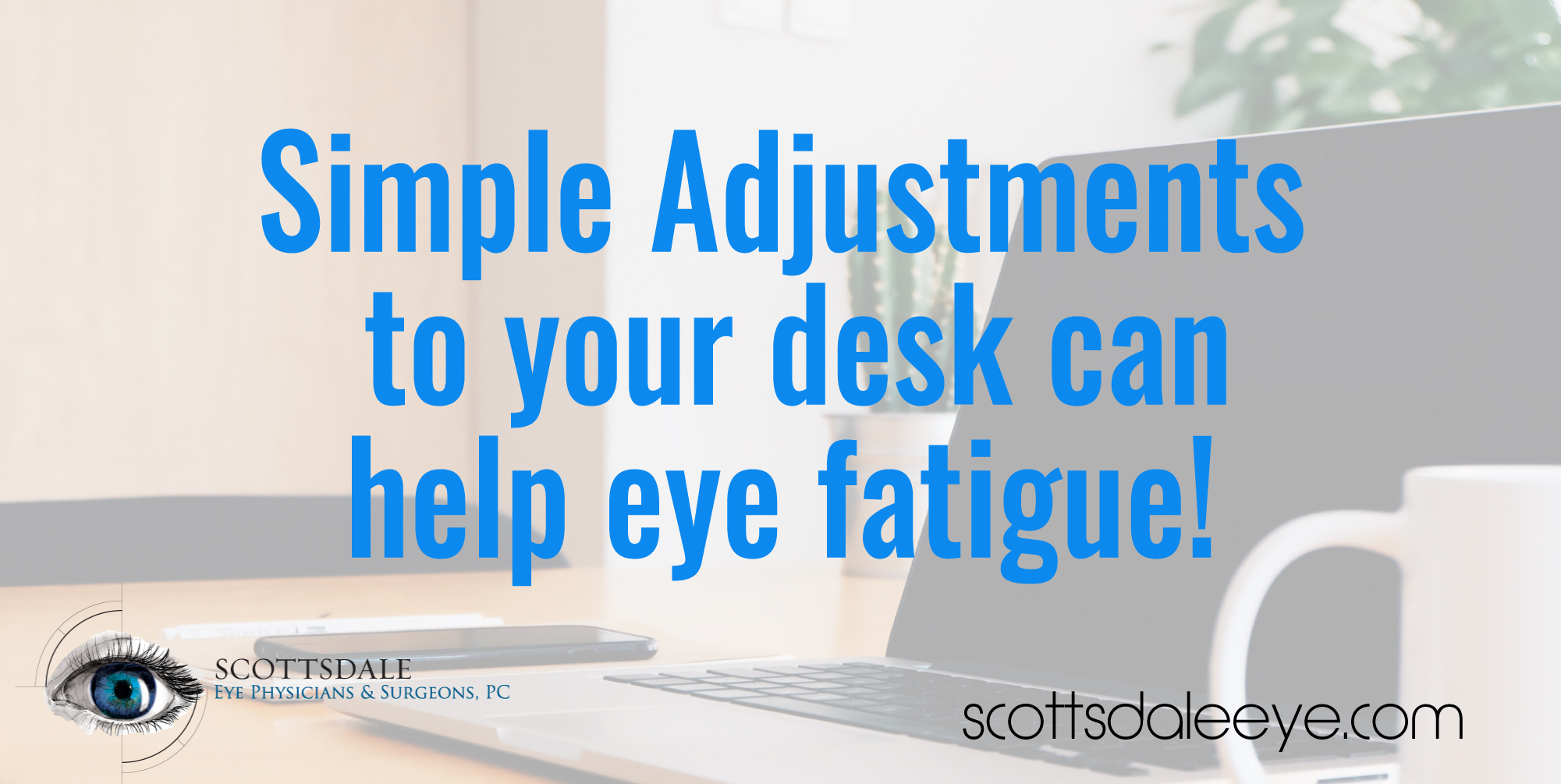Ergonomics for the Eyes: Simple Adjustments to Your Office Environment Can Help Reduce Eye Fatigue
Scottsdale Eye Physicians & Surgeons, PC and the American Academy of Ophthalmology offer tips for avoiding dry, strained eyes during Workplace Eye Wellness Month in March! These simple tips can significantly help eye fatigue!
We have all heard that ergonomic desks are good for backs and necks, but they are also important for the health and comfort of the eyes. In support of Workplace Eye Wellness Month in March, Scottsdale Eye and the American Academy of Ophthalmology are offering tips to desk workers everywhere whose eyes may need relief from too much screen time.
Many people who spend long hours reading or working on a computer for their jobs experience eye discomfort. Focusing on tiny type for hours on end can cause eye strain, fatigue and headaches. Staring at screens for long periods can also leave eyes parched, red and gritty-feeling.
One reason dry eye affects computer users in particular may have to do with blinking. Every time the eyelid closes, it washes moisture over the front of the eye. Normally, people blink about 14 times a minute or so. [i] Focusing the eyes on computer screens or other digital displays has been shown to reduce a person’s blink rate by a third to a half, drying out eyes as a result.[ii]
To help avoid workplace dry eye and eye strain, follow these eye ergonomics tips from the American Academy of Ophthalmology:
- Stay at arm’s length: The eyes actually have to work harder to see close up than far away. If you have a desktop computer, try placing the monitor 25 inches away from your face. No measuring tape? Put your screen an arm’s length away. You may need to adjust the type to appear larger at that distance.
- Take care of glare: While many new phones and laptops have glass screens with excellent picture quality, they also produce a strong glare that can aggravate the eyes. If you use a screen cover, try a matte filter for your screen.
- Give your eyes a break: Just as carpal tunnel syndrome from overuse can hurt your wrists, eye strain occurs after long, continuous periods of reading paper or viewing digital screens up close. Follow the 20-20-20 rule: take a break every 20 minutes by looking at an object 20 feet away for 20 seconds. Looking into the distance allows your eyes to relax. Also, remember to blink! When we concentrate we tend to blink less often!
- Defy dry eye: Many newer office buildings have humidity-controlled environments that suck moisture out of the air. In winter, heaters on high can further dry your eyes. Try a desktop humidifier to add localized moisture and turn off overhead ceiling fans! [iii] Keep artificial tears at hand to help lubricate your eyes.
- Lighten up: When your screen is much brighter than your surroundings, your eyes have to work harder to see. Adjusting your environmental lighting can reduce eye strain. Also, try increasing the contrast on your monitor.
If you have updated your work environment to help eye fatigue but are still experiencing consistently dry, red eyes or eye pain call 480-994-1872 to make an appointment with one of our Doctors or, click here to make an appointment online!
[i] http://www.ncbi.nlm.nih.gov/pubmed/17099391

